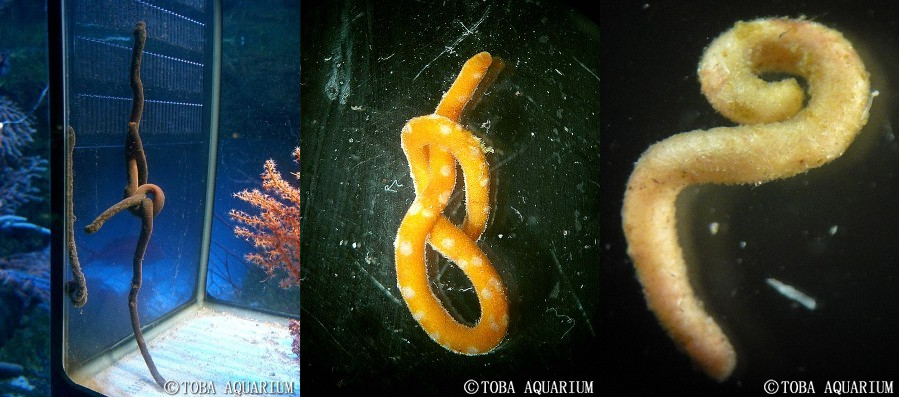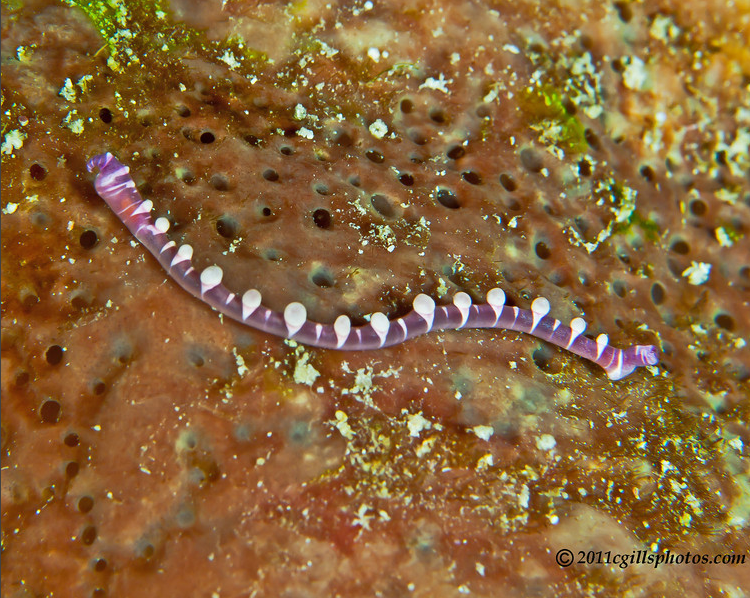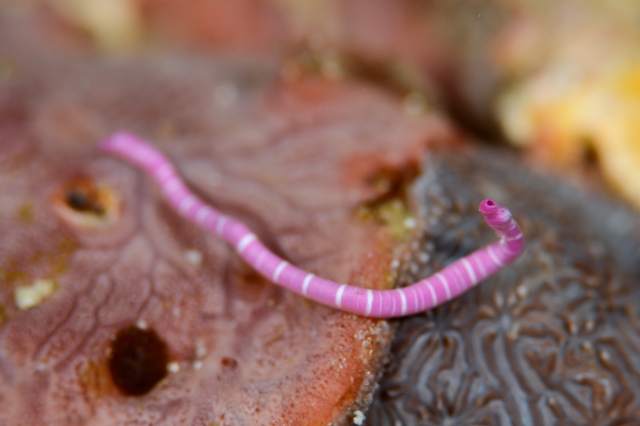
Epimenia and two possible Cavibelonia, the last of which was discovered feeding on a coral. Credit: Toba Aquarium
The diet, as judged from in situ photographs and feeding studies, seems to be specialized on nephtheid corals, particularly Scleronephthya. This presents the possibility of keeping Epimenia alive in captivity, presuming that a steady supply of its prey can be acquired. Of course, this would be an absurdly expensive creature to feed for the home aquarist, given the current market rate for a decent sized Scleronephthya. There’s no published information on the amount or frequency of coral tissue a full-sized Epimenia might need to consume to meet its metabolic requirements. I would hazard a guess that a six-inch tall coral might provide several weeks (or more) of nutrition, assuming the coral doesn’t wither and die before then.
It should go without saying that Epimenia doesn’t make its way into the aquarium trade, at least not intentionally. There are photographs from Japanese aquarists that indicate it has been collected on occasion alongside its cnidarian prey (possibly Stereonephthya in this instance). It’s not uncommon for nephtheid corals to fare poorly in aquariums, and it seems quite probable that, on some occasions, this is due to a hitchhiking Epimenia that has gone unnoticed. Studies on specimens in the wild have shown them to be nocturnal, hiding under rocks near their prey during the day, often in great numbers. An aquarist with a nephtheid that fails to inflate it tissue fully would be wise to search at night for the presence of a worm-mollusk.
Realistically, keeping a specimen successfully longterm would likely require living near a coral reef, specifically one with large stands of their preferred prey species. They are found in shallow water and are reported to be common, at least in areas with their nephtheid prey.
For the adventurous aquarist looking for a truly unique husbandry challenge, Epimenia presents itself with the opportunity to keep a bizarre and poorly-understood species. While it may not be the flashiest or most charismatic creature on the reef, the “nephtheid worm-mollusk” is certainly a beautiful animal with a fascinating evolutionary history. Epimenia reminds us that the true diversity of a tropical coral reef is far grander than what is found in any home aquarium.












0 Comments